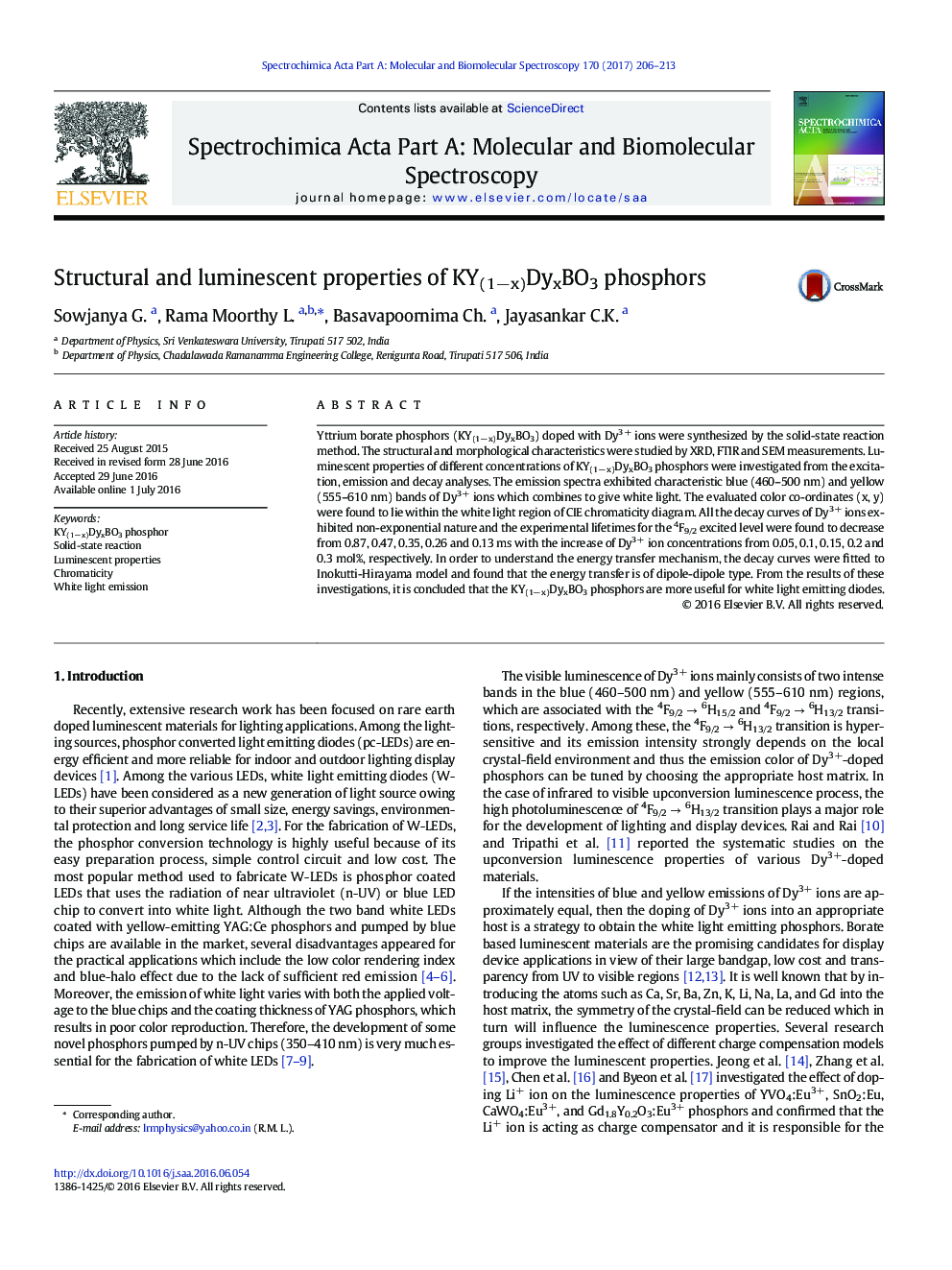| کد مقاله | کد نشریه | سال انتشار | مقاله انگلیسی | نسخه تمام متن |
|---|---|---|---|---|
| 1230775 | 1495199 | 2017 | 8 صفحه PDF | دانلود رایگان |
• Yttrium borate (KY(1−x)DyxBO3) phosphors doped with Dy3+ ions have been synthesized with solid-state reaction method.
• The phosphors are characterized through structural, morphology and luminescence studies.
• The chromaticity coordinates are tunable with white light region by varying Dy3+ ion concentrations.
• The decay curves exhibit non-exponential nature for all the concentrations due to energy transfer.
• The K:Y(1−x)DyxBO3 has a potential for white light emitting diodes in solid state lighting.
Yttrium borate phosphors (KY(1−x)DyxBO3) doped with Dy3+ ions were synthesized by the solid-state reaction method. The structural and morphological characteristics were studied by XRD, FTIR and SEM measurements. Luminescent properties of different concentrations of KY(1−x)DyxBO3 phosphors were investigated from the excitation, emission and decay analyses. The emission spectra exhibited characteristic blue (460–500 nm) and yellow (555–610 nm) bands of Dy3+ ions which combines to give white light. The evaluated color co-ordinates (x, y) were found to lie within the white light region of CIE chromaticity diagram. All the decay curves of Dy3+ ions exhibited non-exponential nature and the experimental lifetimes for the 4F9/2 excited level were found to decrease from 0.87, 0.47, 0.35, 0.26 and 0.13 ms with the increase of Dy3+ ion concentrations from 0.05, 0.1, 0.15, 0.2 and 0.3 mol%, respectively. In order to understand the energy transfer mechanism, the decay curves were fitted to Inokutti-Hirayama model and found that the energy transfer is of dipole-dipole type. From the results of these investigations, it is concluded that the KY(1−x)DyxBO3 phosphors are more useful for white light emitting diodes.
The excitation spectrum of 0.1 mol% Dy3+-doped KYBO phosphor by monitoring the emission at 575 nm. The inset of the figure represents the comparison of the emission intensities of the 0.05 mol% Dy3+-doped YBO and KYBO phosphors.Figure optionsDownload as PowerPoint slide
Journal: Spectrochimica Acta Part A: Molecular and Biomolecular Spectroscopy - Volume 170, 5 January 2017, Pages 206–213
